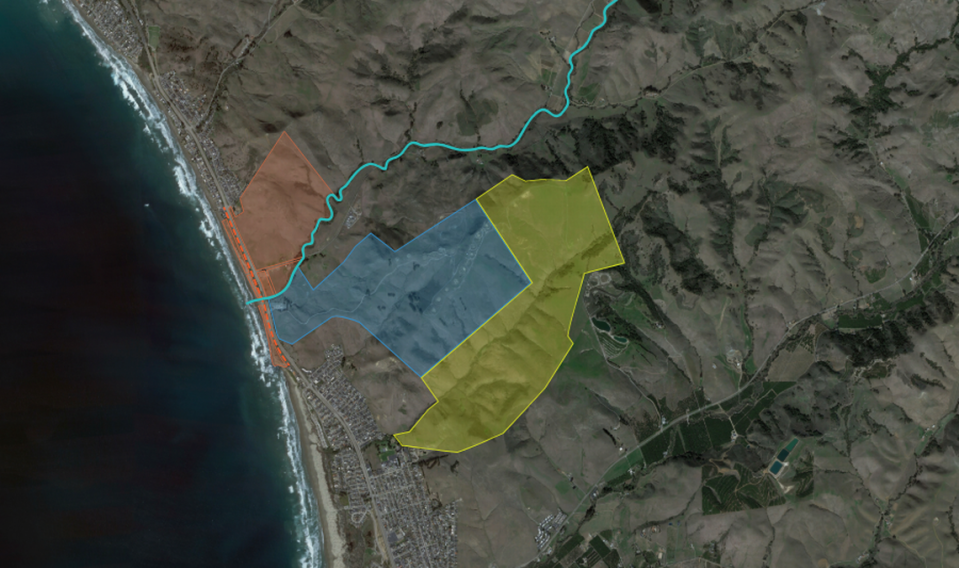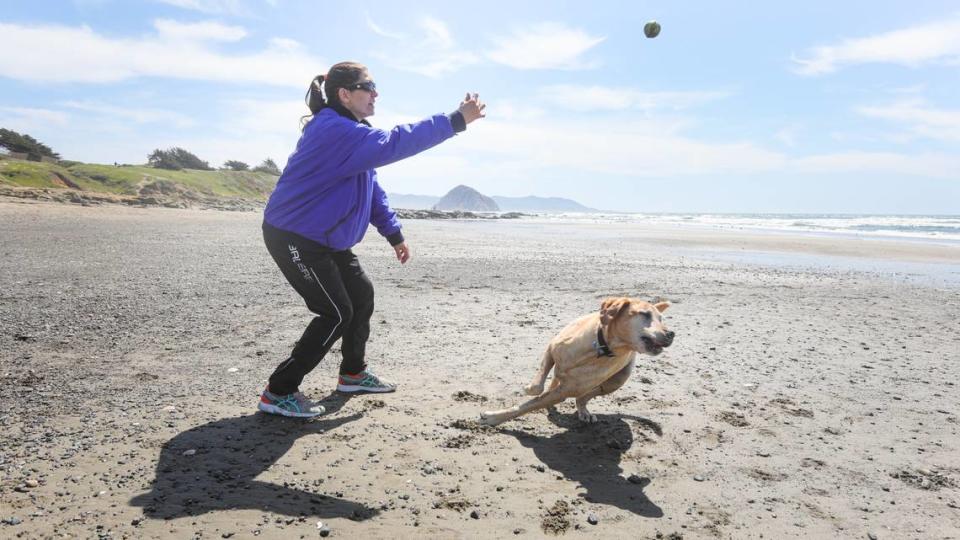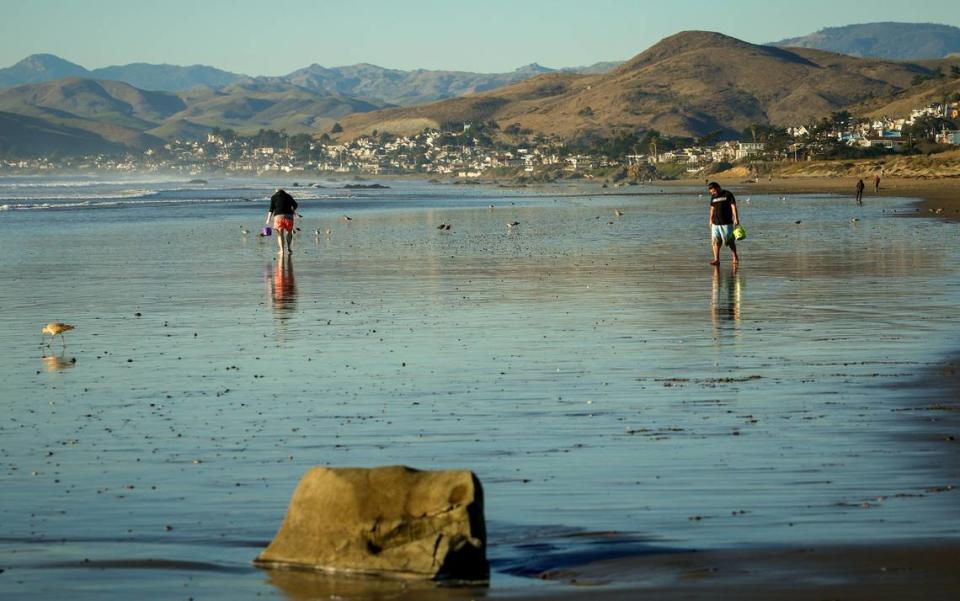SLO County conservation groups work to turn oil property into a ‘world-class open space’
Grassy hillsides near Morro Bay that were once home to an oil pipeline and shipping terminal will be transformed into a huge new San Luis Obispo County park, complete with public trails, a campground and a dog beach.
“This is just a spectacular ocean property,” Land Conservancy of SLO County Deputy Director Daniel Bohlman said of the land that will become the Toro Coast Preserve.
The Land Conservancy of San Luis Obispo County is leading the effort to purchase almost 2,000 acres from Chevron in collaboration with the Cayucos Land Conservancy and the Morro Bay Open Space Alliance.
The organizations are buying the land in three phases, and they are currently fundraising for Phase 2: a 750-acre plot beside Alva Paul Creek.
The property will include a multi-modal trail system and eventually connect to a larger county park, Bohlman said, all of which is expected to be fully open sometime between 2030 and 2032, with some of the space possibly accessible sooner.
“It’s going to be really, really spectacular,” Bohlman said.

New SLO County park to be established in 3 phases
The Phase 1 acquisition of the Toro Coast Preserve project was completed in 2022, when the SLO County Parks Department took ownership of a 350-acre property between Cayucos and Toro Creek east of Highway 1.
The property includes the 20-acre, dog-friendly beach that’s open to the public, while the county leases the rest of the land for grazing and residences.
“It’s really there to protect the scenic viewshed,” Bohlman said of the portion of the property that’s not open to the public.

Meanwhile, three conservation organizations are currently working on Phase 2.
The Land Conservancy of SLO County plans to buy the 750-acre property for $5.5 million from Chevron this summer. The property runs east along Alva Paul Creek near Del Mar Park.
The organization already secured $5 million in state grants to fund the purchase, and it’s working with the Morro Bay Open Space Alliance and Cayucos Land Conservancy to raise the remaining $500,000, Bohlman said.
The groups must secure the funding by August when escrow closes, Bohlman said, but he hopes to finish fundraising by the end of July.
The Land Conservancy has a contract with the county and Chevron, in which the company agrees to donate the Phase 2 property to the County Parks Department during escrow. The contract allows the nonprofit to write grants and negotiate with Chevron on behalf of the county, Bohlman said.
Eventually, the 750 acres will become a county park with a multi-modal trail system for hiking, mountain biking and horseback riding with room to park equestrian trailers nearby.
The trail system will offer a similar experience to the Pismo Preserve, Bohlman said.

Finally, for Phase 3, the nonprofit plans to purchase a 700-acre property from Chevron located between Phases 1 and 2, according to Bohlman.
That land will also become part of the county park with a campground, public trails and easy access to the dog beach.
Bohlman said he expects the county, Chevron and the Land Conservancy of SLO County to sign a sale agreement for the Phase 3 property during the next six months.
“Nothing but good will” binds Chevron to holding the Phase 3 property for the county, Bohlman said, but he’s confident that the deal will go through.
“Chevron has been very good partners with us,” he said. “They have really come around to the idea that conservation for the community is the best use of this property.”
The project preserves a “world-class open space,” Bohlman said, protecting valuable ecosystems while providing an economic engine for the Central Coast.
“Projects like this have a huge economic impact — positively — to those communities,” Bohlman said. “People are going to come, they’re going to camp, they’re going to hike, they’re going to bike, and then they’re going to go out to eat or stay in a hotel.”
History of the Chevron property
Texaco originally used the 3,250-acre property as a marine terminal, where it stored oil before sending it to customers, according to Chevron spokesperson Jeff Moore.
The company extracted oil from inland production fields, then stored it in above-ground tanks near the center of the property, Moore said. An 18-inch pipe then moved the oil along Alva Paul Creek to waiting tankers at a marine terminal west of Del Mar Park, he said.
Texaco closed the marine terminal during the 1970s, then removed all five oil storage tanks in 1997 and 1998.
Chevron acquired the property when it took ownership of Texaco in 2001.
Total petroleum hydrocarbons and California regulated metals used to contaminate the eastern portion of the property where Phase 2 of the Toro Coast Preserve project will be located, Moore said. Chevron removed 14,500 cubic yards of contaminated soil from the site, and the the Central Coast Regional Water Quality Board said the company had adequately cleaned up the plot in 2010.
Chevron removed Texaco’s above-ground pipeline in 2023 and has also cleaned up all contamination on land contained in Phases 1 and 2 of the project.
Chevron still needs time to clean up contamination on land for Phase 3, but once that area is clean, Chevron can sell it to the Land Conservancy, according to Bohlman.
Chevron already sold pieces of the property to the Cayucos Sanitary District and private landowners — but the company is committed to this open space project, Moore said.
Chevron even donated $25,000 to the Land Conservancy of SLO County to support recreational uses planned for the property, Moore said.
Bohlman said the marine terminal may have actually preserved the open space. If the terminal hadn’t been there, the property could have been developed.
“It definitely conserved the unique character of Morro Bay and the character of Cayucos,” he said.

